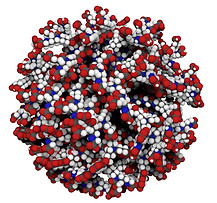Check our Youtube Channel
https://www.youtube.com/channel/UCTtoWa4_sYRVAJ_v-qQpE6g
.jpg)

Biomaterials
Our work in biomaterials revolves around the peptide amphiphiles (PAs), self-assembling molecules that form nanostructures in water. The current projects are described below.
1) Antibacterial nanostructures. We have recently found the morphology of PA-based nanostructures is a key parameter in the antimicrobial action of these systems (DOI: 10.1021/acsami.8b17808). The mechanism of action of the nanostructures is related to their ability to disrupt the bacterial membrane. We are currently fine-tuning parameters such as size, hydrophobic ratio, and zeta potential to find a potent nanostructure with low toxicity. In addition, we try to incorporate know antibiotics within the structure of the PAs to develop hybrid systems with synergistic potential.
https://pubs.acs.org/doi/abs/10.1021/acsami.8b17808
2) New self-assembling systems. We are exploring the effect that various solubilizing groups such as polyamines, sugars, and DNA-base pairs have in the self-assembling properties. We recently published a paper detailing the effect that various amines have in the morphology, cell toxicity, and chemical and metabolic stability of peptide-based systems. Our collaborators, Dr. Mario Tagliazucchi and his group, are developing theoretical tools to understand the behavior of these new systems.
https://onlinelibrary.wiley.com/doi/abs/10.1002/mabi.201700096
https://pubs.rsc.org/en/content/articlelanding/2018/sm/c8sm00096d/unauth#!divAbstract
https://pubs.acs.org/doi/abs/10.1021/acs.jpcc.9b04280
https://pubs.acs.org/doi/abs/10.1021/acs.jpcb.0c01301
3) Cancer-targeting nanostructures. We are developing nanostructures of various morphologies to detect and treat colon and prostate cancer (therasnostic systems).



Flow cytometry analysis. Cell membrane disruption of S. aureus JE2 MRSA treated with PA 4 (C18K5) and PA 7 (C18K-K5) at MIC was determined by an increase in fluorescent intensity of PI. Negative control - No PA; PA 4 at 8 μg/mL; PA 7 at 8 μg/mL and PA 12 (C18R5) at 16 μg/mL. Treatment with EtOH 70% was used as positive control.